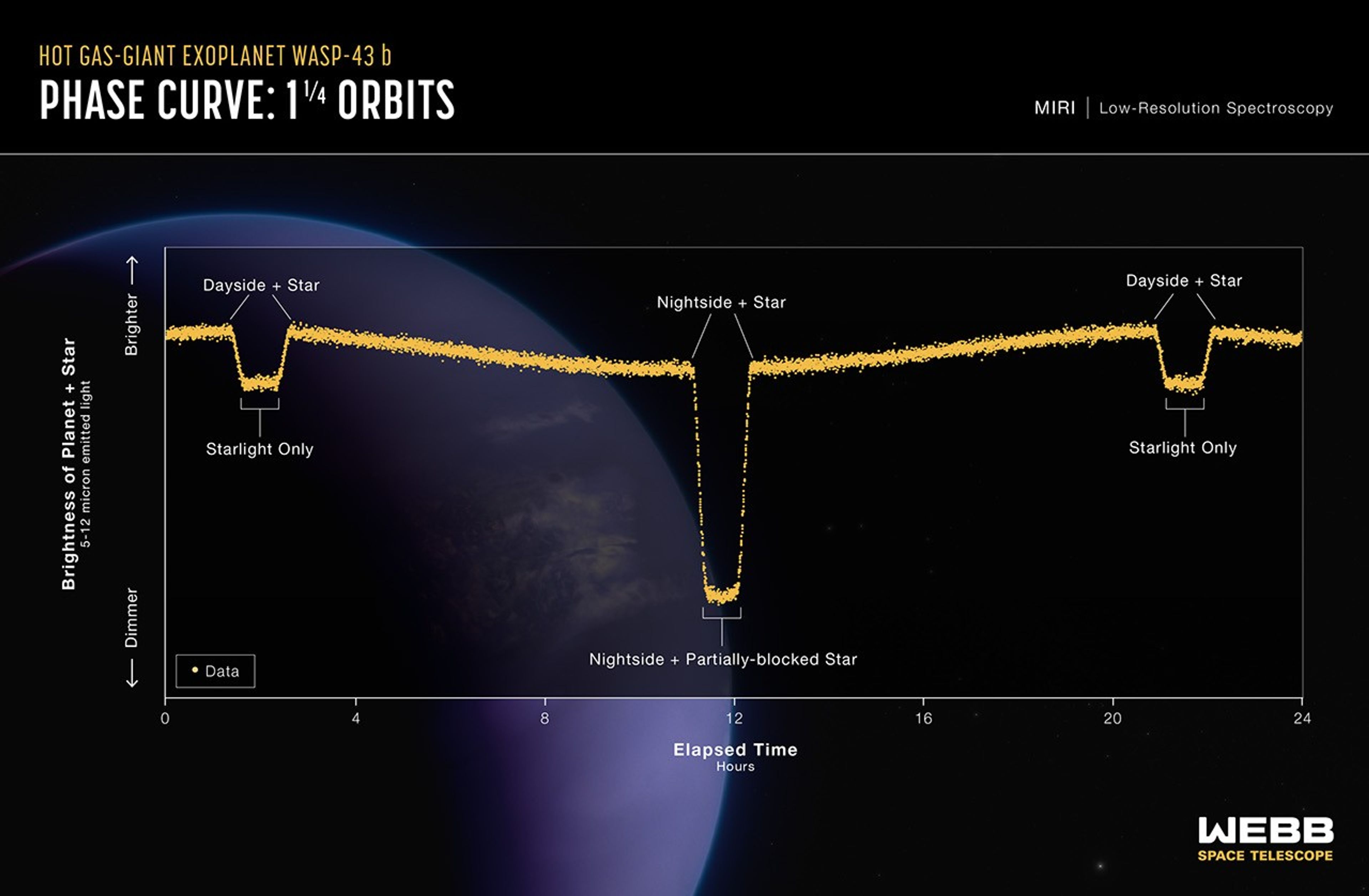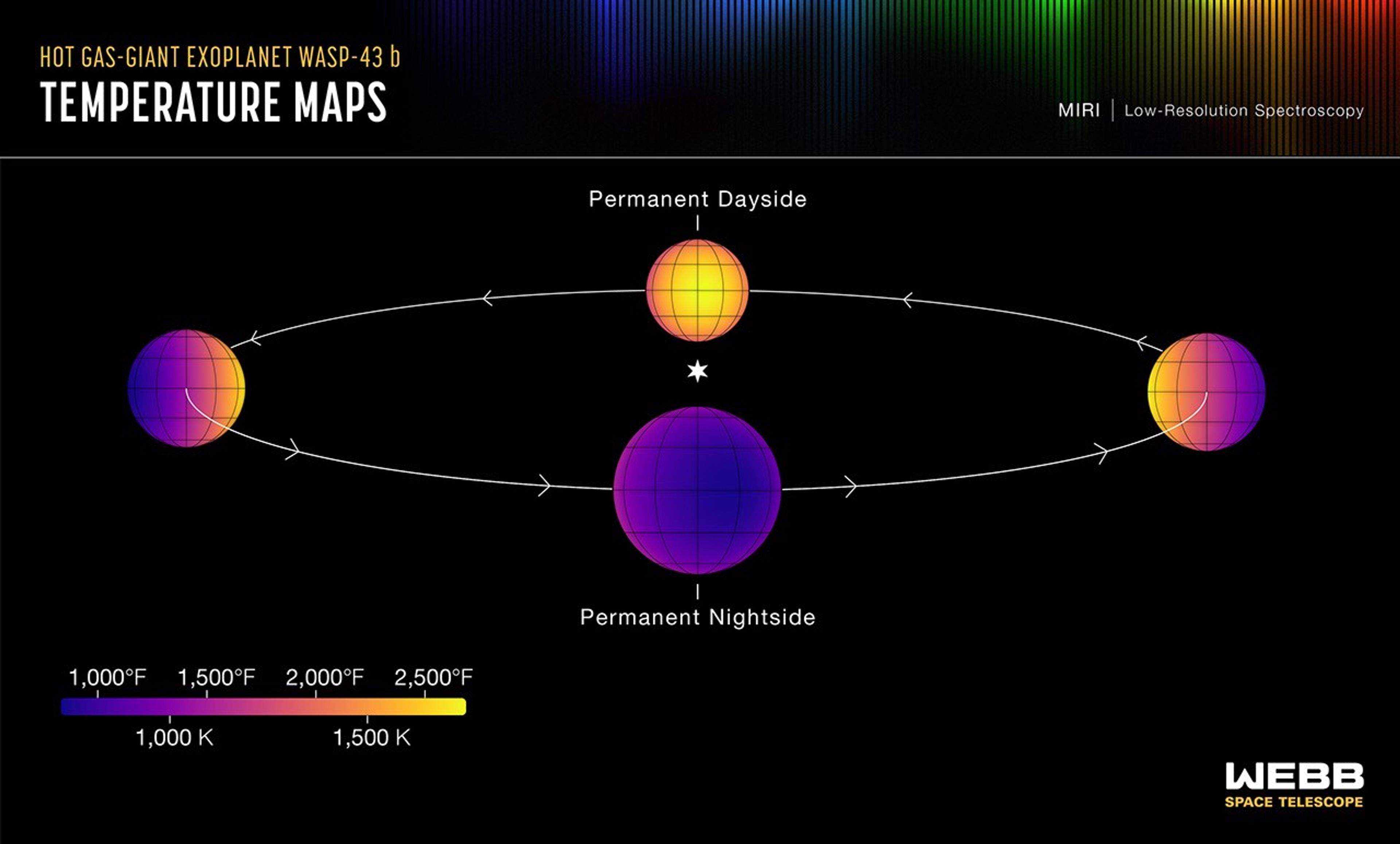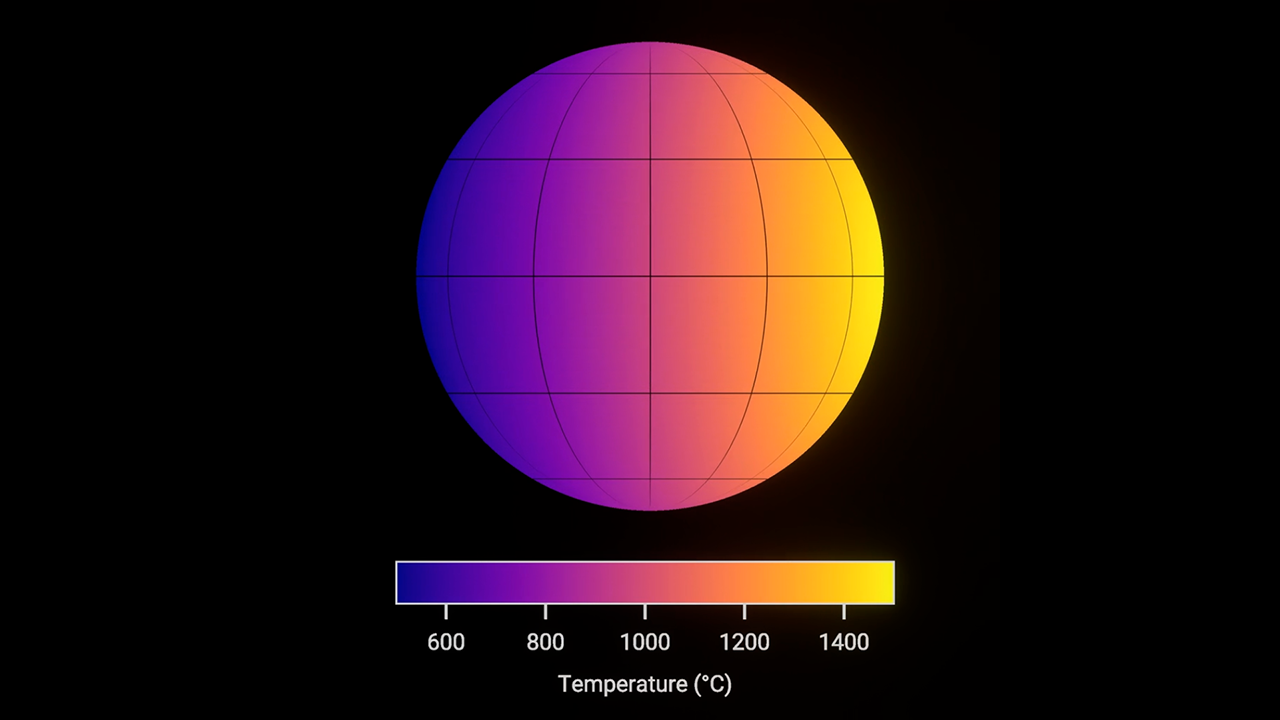1 min read
Hot Gas-Giant Exoplanet WASP-43 b (MIRI Phase Curve)

This light curve shows the change in brightness of the WASP-43 system over time as the planet orbits the star. This type of light curve is known as a phase curve because it includes the entire orbit, or all phases of the planet.
Because it is tidally locked, different sides of WASP-43 b rotate into view as it orbits. The system appears brightest when the hot dayside is facing the telescope, just before and after the secondary eclipse when the planet passes behind the star. The system grows dimmer as the planet continues its orbits and the nightside rotates into view. After the transit when the planet passes in front of the star, blocking some of the starlight, the system brightens again as the dayside rotates back into view.
This graph shows more than 8,000 measurements of 5- to 12-micron mid-infrared light captured over a single 24-hour observation using the low-resolution spectroscopy mode on Webb’s MIRI (Mid-Infrared Instrument). By subtracting the amount of light contributed by the star, astronomers can calculate the amount coming from the visible side of the planet as it orbits. Webb was able to detect differences in brightness as small as 0.004% (40 parts per million).
Since the amount of mid-infrared light given off by an object is directly related to its temperature, astronomers were able to use these measurements to calculate the average temperature of different sides of the planet.
About the Object
- R.A. PositionR.A. PositionRight ascension – analogous to longitude – is one component of an object's position.10:19:37.96
- Dec. PositionDec. PositionDeclination – analogous to latitude – is one component of an object's position.-09:48:23.20
- ConstellationConstellationOne of 88 recognized regions of the celestial sphere in which the object appears.Sextans
- DistanceDistanceThe physical distance from Earth to the astronomical object. Distances within our solar system are usually measured in Astronomical Units (AU). Distances between stars are usually measured in light-years. Interstellar distances can also be measured in parsecs.280 light-years (87 parsecs)
About the Data
- InstrumentInstrumentThe science instrument used to produce the data.MIRI
- Exposure DatesExposure DatesThe date(s) that the telescope made its observations and the total exposure time.November 30 – December 2, 2022
- Object NameObject NameA name or catalog number that astronomers use to identify an astronomical object.WASP-43 b
- Object DescriptionObject DescriptionThe type of astronomical object.Hot Jupiter Exoplanet
- Release DateApril 30, 2024
- Science ReleaseNASA’s Webb Maps Weather on Planet 280 Light-Years Away
- CreditIllustration: NASA, ESA, CSA, Ralf Crawford (STScI); Science: Taylor Bell (BAERI), Joanna Barstow (The Open University), Michael Roman (University of Leicester)
Related Images & Videos

Hot Gas-Giant Exoplanet WASP-43 b (Artist's Concept)
This artist’s concept shows what the hot gas-giant exoplanet WASP-43 b could look like. WASP-43 b is a Jupiter-sized planet circling a star roughly 280 light-years away, in the constellation Sextans. The planet orbits at a distance of about 1.3 million miles (0.014 astronomical...

Hot Gas-Giant Exoplanet WASP-43 b (Temperature Maps)
This set of maps shows the temperature of the visible side of the hot gas-giant exoplanet WASP-43 b, as the planet orbits its star. The temperatures were calculated based on more than 8,000 brightness measurements of 5- to 12-micron mid-infrared light detected from the...

Hot Gas-Giant Exoplanet WASP-43 b (Rotating Global Temperature Map)
Global temperature map of the hot gas giant exoplanet WASP-43 b. This map was made based on the brightness of 5- to 12-micron mid-infrared light detected from the planet by MIRI (the Mid-Infrared Instrument) on NASA’s James Webb Space Telescope. In general, the hotter an object...
Share
Details
Laura Betz
NASA’s Goddard Space Flight Center
Greenbelt, Maryland
laura.e.betz@nasa.gov
NASA, ESA, CSA, Ralf Crawford (STScI)
Taylor Bell (BAERI), Joanna Barstow (The Open University), Michael Roman (University of Leicester)





























